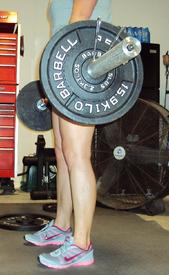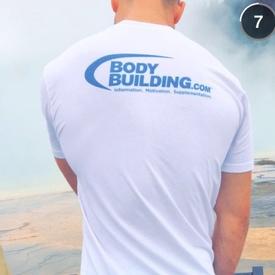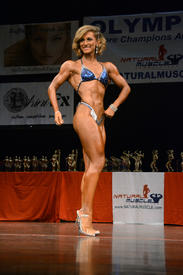Cardio > Strength training
Replies
-
Hey look, I can find studies too!
http://ajcn.nutrition.org/content/66/3/557 While those in Aerobic lost more weight than the strength-based group, they lost the same as those in the diet-only group. The diet-only group lost the most LBM (called fat-free mass in this article), and the aerobic+diet group lost the second most, and the strength+diet group lost significantly less in the 8 weeks.
http://care.diabetesjournals.org/content/35/4/676 "After training, increase in peak oxygen consumption (VO2peak) was greater in the aerobic group (time-by-group interaction P = 0.045), whereas increase in strength was greater in the resistance group (time-by-group interaction P < 0.0001) ... Total and truncal fat, VAT, and SAT were also similarly reduced in both groups..."
Ho, S. S., Dhaliwal, S. S., Hills, A. P., & Pal, S. (2012). The effect of 12 weeks of aerobic, resistance or combination exercise training on cardiovascular risk factors in the overweight and obese in a randomized trial. BMC Public Health, 12(1), 704-713. doi:10.1186/1471-2458-12-704 (You'll have to search for the abstract yourself; my site doesn't provide a public link) "Conclusion: A 12-week training program comprising of resistance or combination exercise, at moderate-intensity for 30 min, five days/week resulted in improvements in the cardiovascular risk profile in overweight and obese participants compared to no exercise. From our observations, combination exercise gave greater benefits for weight loss, fat loss and cardio-respiratory fitness than aerobic and resistance training modalities. Therefore, combination exercise training should be recommended for overweight and obese adults in National Physical Activity Guidelines."
Milanovic, Z. , Pantelic, S. , Trajkovic, N. , Sporis, G. , & Aleksandrovic, M. (2012). The effects of physical exercise on reducing body weight and body composition of obese middle aged people. a systematic review. HealthMed, 6(6), 2176-2189. "Results The combination of exercise (either aerobic or resistance training) and diet has shown the best results in the reduction of body weight."
Donges, C. , Duffield, R. , Drinkwater, E. , & , . (2010). Effects of resistance or aerobic exercise training on interleukin-6, c-reactive protein, and body composition. Medicine & Science in Sports & Exercise, 42(2), 304-313. "Compared with the resistance and the control groups, the aerobic group exhibited significant (P < 0.05) improvements in all aerobic fitness measures and significant reductions in IA-FM (7.4%) and body mass (1.1%). Compared with the aerobic and the control groups, the resistance group significantly (P < 0.05) improved TB-FM (3.7%) and upper (46.3%) and lower (56.6%) body strength." total body fat mass (TB-FM), intra-abdominal fat mass (IA-FM), and total body lean mass (TB-LM)
I was able to find a number of studies that found similar results to the original article you posted. Most don't seem to specify the exercises participants did. The ones that did, only heart rate would be monitored in the aerobic group (and set to a specific level, in some cases, such as always at 70% during the brunt of the workout). I can very much imagine that those in the RT groups were not challenged to the level of the aerobic group, especially in terms of their heart rates and overall calories burned. The specific study you cited also did not even measure before and after RMR for participants; there may be an overall benefit to strength training that cannot be until after the study is over.
Also, you fail to mention the age-related differences for the participants such that older adults do better with RT and younger with AT. Some studies have mentioned gender-related differences, as well.
An article that further discusses my problems with their conclusions can be found here: http://www.myosynthesis.com/effects-of-aerobic-andor-resistance-training-on-body-mass-and-fat-mass-in-overweight-or-obese-adults (TL;DR: Their conclusion is based on time-efficiency, not overall benefits. They seem to come more to the conclusion that the combination of the two is best overall.)
And just a last thing to add, I think a lot of people actually want to be "toned" rather than just slim. A lack of LBM is usually not preferred over some muscle definition. I think this is particularly true in men, but can be just as true for women as well. Nobody says they want to look flabby, but at their perfect weight. Toned is generally the preferred term, which suggests muscle definition, which requires RT.0 -
Aerobic literally means "living in air",[2] and refers to the use of oxygen to adequately meet energy demands during exercise via aerobic metabolism
Funny, I find myself sucking up quite a bit of oxygen, getting my heart rate going and breaking out in a sweat when picking up heavy things and putting them back down again, loading and unloading plates, moving my bar from the squat rack to the biceps rack to the floor and back again for an hour non-stop ... so I must be doing this "cardio" you speak of. :bigsmile:
Thanks for clearing that up! :flowerforyou:0 -
Hey look, I can find studies too!
http://ajcn.nutrition.org/content/66/3/557 While those in Aerobic lost more weight than the strength-based group, they lost the same as those in the diet-only group. The diet-only group lost the most LBM (called fat-free mass in this article), and the aerobic+diet group lost the second most, and the strength+diet group lost significantly less in the 8 weeks.
http://care.diabetesjournals.org/content/35/4/676 "After training, increase in peak oxygen consumption (VO2peak) was greater in the aerobic group (time-by-group interaction P = 0.045), whereas increase in strength was greater in the resistance group (time-by-group interaction P < 0.0001) ... Total and truncal fat, VAT, and SAT were also similarly reduced in both groups..."
Ho, S. S., Dhaliwal, S. S., Hills, A. P., & Pal, S. (2012). The effect of 12 weeks of aerobic, resistance or combination exercise training on cardiovascular risk factors in the overweight and obese in a randomized trial. BMC Public Health, 12(1), 704-713. doi:10.1186/1471-2458-12-704 (You'll have to search for the abstract yourself; my site doesn't provide a public link) "Conclusion: A 12-week training program comprising of resistance or combination exercise, at moderate-intensity for 30 min, five days/week resulted in improvements in the cardiovascular risk profile in overweight and obese participants compared to no exercise. From our observations, combination exercise gave greater benefits for weight loss, fat loss and cardio-respiratory fitness than aerobic and resistance training modalities. Therefore, combination exercise training should be recommended for overweight and obese adults in National Physical Activity Guidelines."
Milanovic, Z. , Pantelic, S. , Trajkovic, N. , Sporis, G. , & Aleksandrovic, M. (2012). The effects of physical exercise on reducing body weight and body composition of obese middle aged people. a systematic review. HealthMed, 6(6), 2176-2189. "Results The combination of exercise (either aerobic or resistance training) and diet has shown the best results in the reduction of body weight."
Donges, C. , Duffield, R. , Drinkwater, E. , & , . (2010). Effects of resistance or aerobic exercise training on interleukin-6, c-reactive protein, and body composition. Medicine & Science in Sports & Exercise, 42(2), 304-313. "Compared with the resistance and the control groups, the aerobic group exhibited significant (P < 0.05) improvements in all aerobic fitness measures and significant reductions in IA-FM (7.4%) and body mass (1.1%). Compared with the aerobic and the control groups, the resistance group significantly (P < 0.05) improved TB-FM (3.7%) and upper (46.3%) and lower (56.6%) body strength." total body fat mass (TB-FM), intra-abdominal fat mass (IA-FM), and total body lean mass (TB-LM)
I was able to find a number of studies that found similar results to the original article you posted. Most don't seem to specify the exercises participants did. The ones that did, only heart rate would be monitored in the aerobic group (and set to a specific level, in some cases, such as always at 70% during the brunt of the workout). I can very much imagine that those in the RT groups were not challenged to the level of the aerobic group, especially in terms of their heart rates and overall calories burned. The specific study you cited also did not even measure before and after RMR for participants; there may be an overall benefit to strength training that cannot be until after the study is over.
Also, you fail to mention the age-related differences for the participants such that older adults do better with RT and younger with AT. Some studies have mentioned gender-related differences, as well.
An article that further discusses my problems with their conclusions can be found here: http://www.myosynthesis.com/effects-of-aerobic-andor-resistance-training-on-body-mass-and-fat-mass-in-overweight-or-obese-adults (TL;DR: Their conclusion is based on time-efficiency, not overall benefits. They seem to come more to the conclusion that the combination of the two is best overall.)
And just a last thing to add, I think a lot of people actually want to be "toned" rather than just slim. A lack of LBM is usually not preferred over some muscle definition. I think this is particularly true in men, but can be just as true for women as well. Nobody says they want to look flabby, but at their perfect weight. Toned is generally the preferred term, which suggests muscle definition, which requires RT. 0
0 -
Diet+strength train+cardio=the best benefits.0
-
Hey look, I can find studies too!
http://ajcn.nutrition.org/content/66/3/557 While those in Aerobic lost more weight than the strength-based group, they lost the same as those in the diet-only group. The diet-only group lost the most LBM (called fat-free mass in this article), and the aerobic+diet group lost the second most, and the strength+diet group lost significantly less in the 8 weeks.
http://care.diabetesjournals.org/content/35/4/676 "After training, increase in peak oxygen consumption (VO2peak) was greater in the aerobic group (time-by-group interaction P = 0.045), whereas increase in strength was greater in the resistance group (time-by-group interaction P < 0.0001) ... Total and truncal fat, VAT, and SAT were also similarly reduced in both groups..."
Ho, S. S., Dhaliwal, S. S., Hills, A. P., & Pal, S. (2012). The effect of 12 weeks of aerobic, resistance or combination exercise training on cardiovascular risk factors in the overweight and obese in a randomized trial. BMC Public Health, 12(1), 704-713. doi:10.1186/1471-2458-12-704 (You'll have to search for the abstract yourself; my site doesn't provide a public link) "Conclusion: A 12-week training program comprising of resistance or combination exercise, at moderate-intensity for 30 min, five days/week resulted in improvements in the cardiovascular risk profile in overweight and obese participants compared to no exercise. From our observations, combination exercise gave greater benefits for weight loss, fat loss and cardio-respiratory fitness than aerobic and resistance training modalities. Therefore, combination exercise training should be recommended for overweight and obese adults in National Physical Activity Guidelines."
Milanovic, Z. , Pantelic, S. , Trajkovic, N. , Sporis, G. , & Aleksandrovic, M. (2012). The effects of physical exercise on reducing body weight and body composition of obese middle aged people. a systematic review. HealthMed, 6(6), 2176-2189. "Results The combination of exercise (either aerobic or resistance training) and diet has shown the best results in the reduction of body weight."
Donges, C. , Duffield, R. , Drinkwater, E. , & , . (2010). Effects of resistance or aerobic exercise training on interleukin-6, c-reactive protein, and body composition. Medicine & Science in Sports & Exercise, 42(2), 304-313. "Compared with the resistance and the control groups, the aerobic group exhibited significant (P < 0.05) improvements in all aerobic fitness measures and significant reductions in IA-FM (7.4%) and body mass (1.1%). Compared with the aerobic and the control groups, the resistance group significantly (P < 0.05) improved TB-FM (3.7%) and upper (46.3%) and lower (56.6%) body strength." total body fat mass (TB-FM), intra-abdominal fat mass (IA-FM), and total body lean mass (TB-LM)
I was able to find a number of studies that found similar results to the original article you posted. Most don't seem to specify the exercises participants did. The ones that did, only heart rate would be monitored in the aerobic group (and set to a specific level, in some cases, such as always at 70% during the brunt of the workout). I can very much imagine that those in the RT groups were not challenged to the level of the aerobic group, especially in terms of their heart rates and overall calories burned. The specific study you cited also did not even measure before and after RMR for participants; there may be an overall benefit to strength training that cannot be until after the study is over.
Also, you fail to mention the age-related differences for the participants such that older adults do better with RT and younger with AT. Some studies have mentioned gender-related differences, as well.
An article that further discusses my problems with their conclusions can be found here: http://www.myosynthesis.com/effects-of-aerobic-andor-resistance-training-on-body-mass-and-fat-mass-in-overweight-or-obese-adults (TL;DR: Their conclusion is based on time-efficiency, not overall benefits. They seem to come more to the conclusion that the combination of the two is best overall.)
And just a last thing to add, I think a lot of people actually want to be "toned" rather than just slim. A lack of LBM is usually not preferred over some muscle definition. I think this is particularly true in men, but can be just as true for women as well. Nobody says they want to look flabby, but at their perfect weight. Toned is generally the preferred term, which suggests muscle definition, which requires RT.
http://ajcn.nutrition.org/content/66/3/557
this study everything is pretty similar but cardio was more effective in fat loss but not by much, but strength training seemed to be the smarter choice in body comp.
http://care.diabetesjournals.org/content/35/4/676
“Lean limb mass increased by ∼0.4 kg in the AER group and by ∼0.8 kg in the RES group, with no statistically significant difference between groups.”
In the AER group BMI, waist was less than the RT group. Fat loss and LBM was greater in the AER group.
^everything was very close though
Ho, S. S., Dhaliwal, S. S., Hills, A. P., & Pal, S. (2012).
Milanovic, Z. , Pantelic, S. , Trajkovic, N. , Sporis, G. , & Aleksandrovic, M. (2012).
Didn’t really look at them but it make sense that both(AT&RT) are more effective than one.Also, you fail to mention the age-related differences for the participants such that older adults do better with RT and younger with AT.
Umm yeah its more important for older males/females to preserve LBM than younger. agree 100%. my argument was never RT is not effective or not to do it.An article that further discusses my problems with their conclusions can be found here: http://www.myosynthesis.com/effects-of-aerobic-andor-resistance-training-on-body-mass-and-fat-mass-in-overweight-or-obese-adults (TL;DR: Their conclusion is based on time-efficiency, not overall benefits. They seem to come more to the conclusion that the combination of the two is best overall.)
i think the problem with the whole study which i mentioned earlier was the RT/AT group trained twice as long as the other two groups.
Yeah doing both seems to be the most intelligent option.
anyways thanks for the input, I really appreciate it.0 -
Mixing up ">" and "<" is a common error. Don't sweat it.
hehehe
Cardio doesn't come CLOSE to changing your body the way weight training does...not even CLOSE. And cardio is completely unnecessary to lose weight...you can just eat less food if you choose to.
Anyway, I do both, but lifting is my priority and always will be. To each their own...all exercise is good.
Singing amen in the pew while I squat and curl.0 -
I beg to differ.
Cardio may burn more calories during, but strength training will raise your metabolism for hours after you work out, helps you develop more lean muscle so you burn more calories at rest, not to mention I definitely get my heart rate up while lifting.
Also worth mentioning I wasn't able to get to my lowest weight until I started lifting (after months of cardio), and even though I'm 5lbs heavier than my lowest now, I'm still smaller/the same size thanks to my lean muscle.
I'm not saying one is better than the other. I love cardio- I run like a crazy person. But I know hours of cardio is only going to get you so far in the world of weight loss and body shaping. Because shaping your body is REALLY what most people are after when they say they want to lose weight... they want a nice, toned, trim body, and you don't get that without lifting some weights.0 -
I keep seeing all these post about how strength training is more effective than cardio for Calorie burning.
NO, its not!
If your goal is to lose fat.
Cardio
If your goal is to build muscle
Strength train
http://jap.physiology.org/content/113/12/1831.abstract
"balancing time commitments against health benefits, it appears that aerobic training is the optimal mode of exercise for reducing fat mass and body mass, while a program including resistance training is needed for increasing lean mass in middle-aged, overweight/obese individuals."
Obviously diet is more important than cardio or strength training for weight loss.
You are so so so so wrong and it is because of people like you that everyone else on MFP has to constantly ask the question, "cardio or weight training?"
If you want to lose WEIGHT (not just fat, muscle too) then only do cardio and diet. See what happens, people.
If you want to lose fat faster, build muscle, look AMAZING and live a healthy lifestyle, do a balance of cardio and resistance training.
And whatever you do, don't listen to this guy, he has no idea what he's talking about. The part of the article he has quoted says that aerobic training is effective for reducing "fat mass and body mass." BODY MASS is both fat and muscle. That isn't what you're trying to do in this weight loss "journey" you're on, is it? Lose muscle? You wanna look FIT, right! Not just "thin."
To reiterate. This guy (the original poster) = clueless.
Edit to add: Check out #1 on this article, and yes, they quote a study conducted so I'm not just throwing wiki articles at you:
http://health.yahoo.net/rodale/WH/fitness-fact-or-fiction
Bowing down please somebody inform the cardio queens of this new found info! Lol0 -
Studies have shown that Calories Per Minute (CPM) through chocolate consumption far exceed the CPM in most forms of cardiovascular activity.
Therefore: Chocolate > Cardio
Moral of the story: Eat More Chocolate.0 -

In all seriousness though, you need/should do both because of the benefits.0 -
looks like a good thread.
However, tldr
can some one post some cliffs?0 -
-
Nothing like an old fashioned dead horse beating!0
-
Muscle doesn't burn that much more at rest than fat...0
-
all depends...it's been proven that both will shred fat faster.
Cardio burns fat but adding weights will build muscles and those muscles will burn fat (all the time)...
The best thing in my opinion at first to lose major fat is to do lots of cardio and some strength (weights) workouts.
After.... Go strength and add some cardio...To tone everything up.
Works fine for me.
This is the route I'm taking. I've essentially lost 20 lbs focusing on cardio while starting stronglifts. I have seen a reduction bf% and an increase in LM while loosing weight (The gain in LM isn't much but still a gain.). When I get down to around 190-195, I am probably going to focus a little more on the weight training than the cardio, but still continue doing both.0 -
it depends. i think if it's the type of cardio where you just cruise (like those who use the elliptical at a steady pace), then no, i don't think it's more "effective" at fat loss than weight training because caloric burn stops as soon as you get off the treadmill. after lifting, your body continues to burn cals post-exercise for several hours.
however, i do HIIT type cardio AND strength training to get the most out of my workouts.0 -
looks like a good thread.
However, tldr
can some one post some cliffs?
TL;DR
Most studies in this thread were with obese/overweight people on a diet
RT resistant training = Strength
AT Aerobic exercise = Cardio
AT is better for over all weight loss muscle and fat! Both are higher let me repeat myself you lose more fat with AT than RT
RT is better for adding and keeping muscle, you can expect good fat loss also
AT & RT done together will prevent muscle loss and loss the maximum amount of fat
for overall body comp RT is probably your best bet0 -
bump0
-
-
so you take a group of people, dont control their diet, dont control their macros and have them not do strength training and not do freeweight compounds. and you discover their results are not good compared to other training methods which were done properly...
this is a study where they **** up every possible way and the resistance group still does pretty good...0 -
Mixing up ">" and "<" is a common error. Don't sweat it.
:laugh: :drinker:0 -
For weight loss, the best thing is a calorie deficit. To preserve muscle mass in a calorie deficit, strength training is better than cardio.
For physical fitness, I think both cardio and strength training are important. However, if you prefer one over the other in terms of enjoyment than doing just one is a hell of a lot better than doing neither.
You could always just do HIIT/crossfit style training and kill the two birds with one stone, though.
(I just had to throw my $0.02 in the rich fountain this thread has become. :P )0 -
I keep seeing all these post about how strength training is more effective than cardio for Calorie burning.
NO, its not!
If your goal is to lose fat.
Cardio
If your goal is to build muscle
Strength train
http://jap.physiology.org/content/113/12/1831.abstract
"balancing time commitments against health benefits, it appears that aerobic training is the optimal mode of exercise for reducing fat mass and body mass, while a program including resistance training is needed for increasing lean mass in middle-aged, overweight/obese individuals."
Obviously diet is more important than cardio or strength training for weight loss.
Study was not controlled for calorie consumption.0 -
Total upfront disclaimer: I only spot read some of the previous posts so I probably missed something somewhere and someone has probably brought this up but...
What about different body types? Wouldn't a person's body type have a lot to do with how their body responds to different types of exercise?
Example: My husband could lift heavy every single day and wouldn't get any bigger/stronger. But cardio gets him lean and mean. I was doing cardio for 30-45 minutes every single day and didn't lose an ounce. However once I started lifting again my body finally started responding. I've lost weight and have increased my lifting weight quite a bit. I lift to lose weight and cardio to get my BP down.
Put it this way... an Ectomorph is going to train differently than a Mesomorph and an Endomorph is going to have to do everything. So what works for one person is going to be an exercise in frustration for another. You first have to know your body type and then try different combinations of exercise and eating to find what works for you. Chances are if you prefer one type of training over another, it's probably because that's what your body loves and responds to. You're doing the right stuff for your body type. On the other hand, if your body isn't responding, it may be time to try something different.
Physical fitness is not a one size fits all. So all of this Cardio vs. Strength debate is kind of a moot point. You do whatever it takes and works for YOU.0 -
Example: My husband could lift heavy every single day and wouldn't get any bigger/stronger.
Totally nonsensical.Put it this way... an Ectomorph is going to train differently than a Mesomorph and an Endomorph is going to have to do everything. So what works for one person is going to be an exercise in frustration for another. You first have to know your body type and then try different combinations of exercise and eating to find what works for you. Chances are if you prefer one type of training over another, it's probably because that's what your body loves and responds to. You're doing the right stuff for your body type. On the other hand, if your body isn't responding, it may be time to try something different.
Physical fitness is not a one size fits all. So all of this Cardio vs. Strength debate is kind of a moot point. You do whatever it takes and works for YOU.
Ectomorph/endomorph/mesomorph are complete fabrications, made up by some 1950s psychologist.0 -
Example: My husband could lift heavy every single day and wouldn't get any bigger/stronger.
Totally nonsensical.
He probably wasn't eating enough.
ETA: ..or resting enough!! Every single day? Really!?Ectomorph/endomorph/mesomorph are complete fabrications, made up by some 1950s psychologist.
Also, did you know that your intellectual ability and personality are predetermined by the shape of your skull?
AND The lines in your hands determine your fate.
True facts.0 -
I forgot the moral of the story. In addition I need to go back to basic math <>=???? :huh: :yawn:0
-
Mixing up ">" and "<" is a common error. Don't sweat it.
:laugh:0 -
If I did cardio only to burn calories I would look like a stick man at the end :sad:0
-
Love this0
This discussion has been closed.
Categories
- All Categories
- 1.4M Health, Wellness and Goals
- 398.2K Introduce Yourself
- 44.7K Getting Started
- 261K Health and Weight Loss
- 176.4K Food and Nutrition
- 47.7K Recipes
- 233K Fitness and Exercise
- 462 Sleep, Mindfulness and Overall Wellness
- 6.5K Goal: Maintaining Weight
- 8.7K Goal: Gaining Weight and Body Building
- 153.5K Motivation and Support
- 8.4K Challenges
- 1.4K Debate Club
- 96.5K Chit-Chat
- 2.6K Fun and Games
- 4.8K MyFitnessPal Information
- 12 News and Announcements
- 21 MyFitnessPal Academy
- 1.5K Feature Suggestions and Ideas
- 3.2K MyFitnessPal Tech Support Questions















 http://www.youtube.com/watch?v=fAU_sqHGiYw
http://www.youtube.com/watch?v=fAU_sqHGiYw




